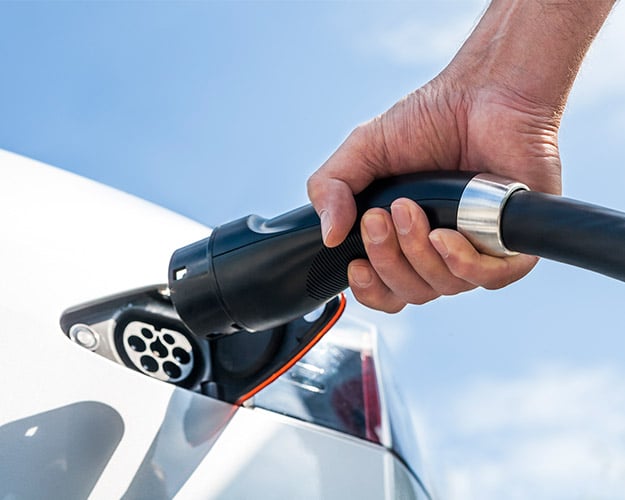Key Takeaways
- The Inflation Reduction Act provides a federal tax incentive for businesses and tax-exempt entities investing in clean commercial vehicles and machinery.
- Beginning in 2023, a credit is allowed for clean vehicles acquired for use or lease by the taxpayer (not resale).
- A direct payment election, under IRC Section 6417, is available for tax-exempt entities.
The Inflation Reduction Act (IRA) provides a new federal tax incentive for business taxpayers and tax-exempt organizations purchasing energy efficient clean vehicles. Beginning in 2023, businesses and tax-exempt organizations may claim a credit on purchases of commercial clean vehicles for business use. And to help taxpayers determine eligibility, the IRS has released a Frequently Asked Questions (FAQs) page.
Credit for Qualified Commercial Clean Vehicles
The credit is $7,500 for qualified vehicles with a gross vehicle weight rating under 14,000 pounds and up to $40,000 for all other vehicles, equaling the lesser of:
- 15% of the basis in the vehicle (30% if the vehicle is not powered by gas or diesel)
- The incremental cost of the vehicle
The incremental cost equals the excess of the purchase price of a qualifying vehicle over the price of a comparable vehicle that is powered solely by a gasoline or diesel internal combustion engine and which is comparable in size and use.
- Here’s what you need to know about the clean vehicle credit and its impact on your organization. Read more.
Vehicle Requirements
Like the other clean vehicle credits, manufacturers must certify specific vehicles and machinery meet applicable credit criteria. As a resource, the IRS maintains a list of qualifying manufacturers.
Qualifying vehicles must meet many requirements, including:
- Be subject to a depreciation allowance, except vehicles purchased by tax-exempt organizations and those not subject to a lease.
- Be made by a qualified manufacturer.
- For business use and not for resale.
- For use primarily in the United States.
- Not have been allowed a different clean vehicle credit.
In addition, qualifying vehicles must be classified as:
- a motor vehicle, manufactured primarily for use on public roads
- mobile machinery as defined by IRC Section 4053(8), including vehicles that are not designed to perform a function of transporting a load over a public highway, but used to perform operations such as construction, manufacturing, drilling, mining, timbering, processing, farming, or similar operations.
Qualifying vehicles must meet the following requirements:
- A plug-in electric vehicle, powered by an electric motor that draws significant propulsion from a battery with capacity of at least:
- 7 kilowatt hours if the gross vehicle weight rating (GVWR) is under 14,000 pounds
- 15 kilowatt hours if the GVWR is 14,000 pounds or more; or
- A fuel cell motor vehicle
Claiming the Credit
There is no limit to the number of credits a business or tax-exempt organization may claim in a tax year, providing the opportunity for entities to upgrade entire fleets of vehicles. Like the clean vehicle credits for personal use, this credit is nonrefundable; however, it may be carried over as a general business credit.
To claim the credit, Partnerships and S Corporations must file Form 8936, Qualified Plug-in Electric Drive Motor Vehicle Credit. All other taxpayers are not required to complete Form 8936 if their only source for this credit is a Partnership or S corporation. Instead, they can report this credit directly on Form 3800, General Business Credit.
For the first time, tax-exempt entities may apply for clean energy tax credits by completing a direct payment election. Learn more: How Exempt Organizations Can Benefit from Clean Energy Incentives.
Next Steps
Although there are many similarities among the three clean vehicle credits, there are several significant differences taxpayers must consider.
New vehicles qualifying under the Qualified Commercial Clean Vehicle Credit must be for business use, and there are no income limitations. Many additional vehicle requirements are not applicable, including the North America assembly requirement and the battery’s critical mineral and component requirements (which also includes the Foreign Entity of Concern restrictions).
Because lessors may qualify for the Commercial Clean Vehicle Credit with fewer restrictions than individuals applying for the New Clean Vehicle Credit for personal use, lessors may pass-on the credit to lessees through financial lease incentives, although this is not a requirement.
When considering the purchase of clean vehicles for your business, it is also important to consider the variety of state incentives that may be available.
What to know about changes to the federal income tax credits available for vehicles.
 Read the Article
Read the ArticleBusiness Credits & Incentives
Dealerships
Who We Are
Eide Bailly is a CPA and business advisory firm helping our clients grow, thrive, and embrace opportunities and innovation.




